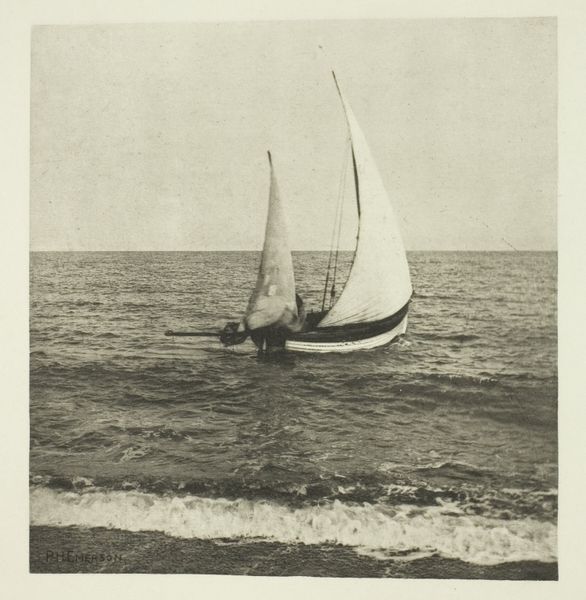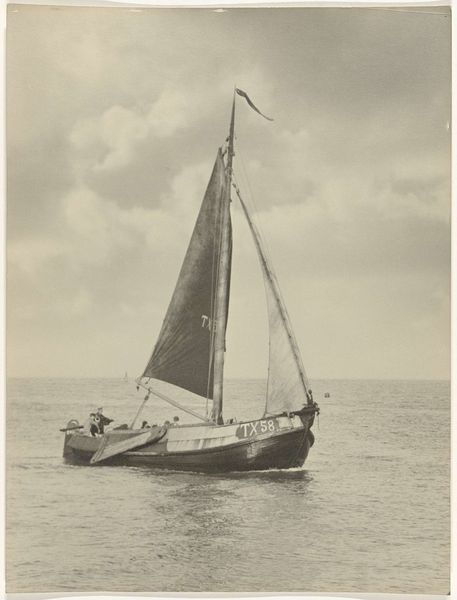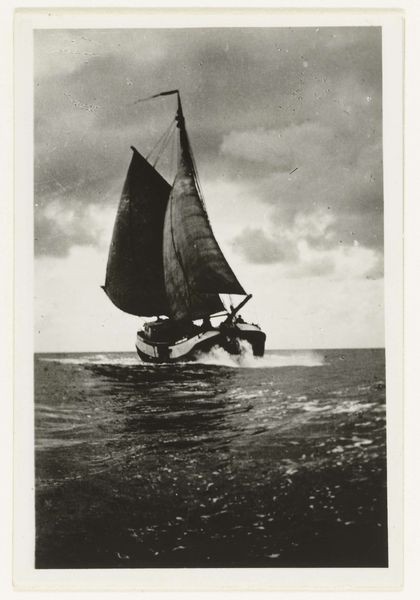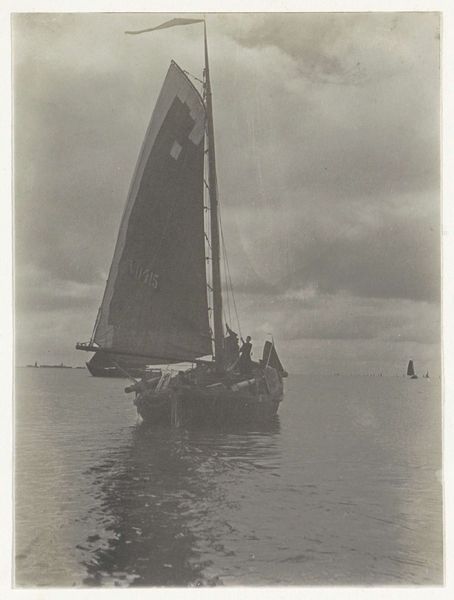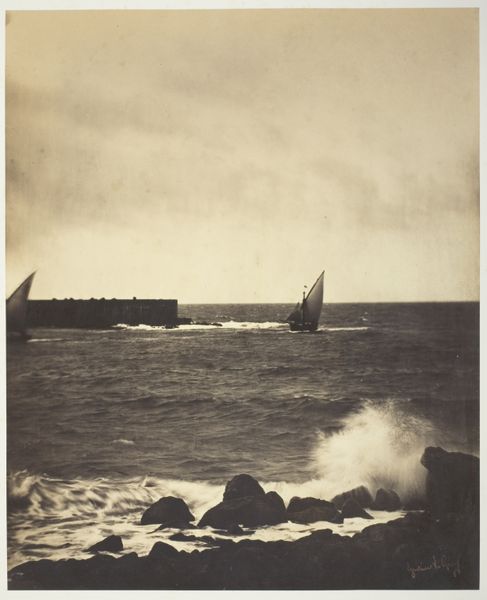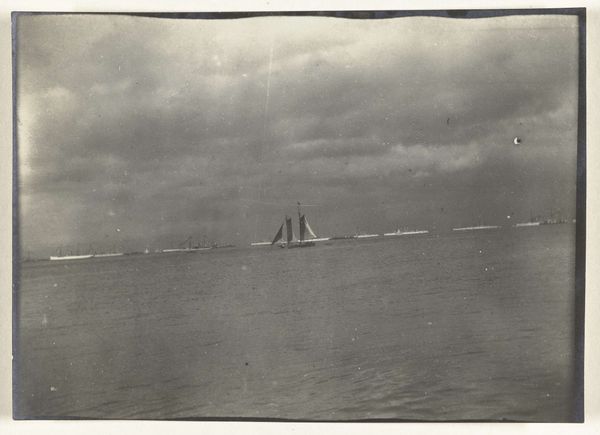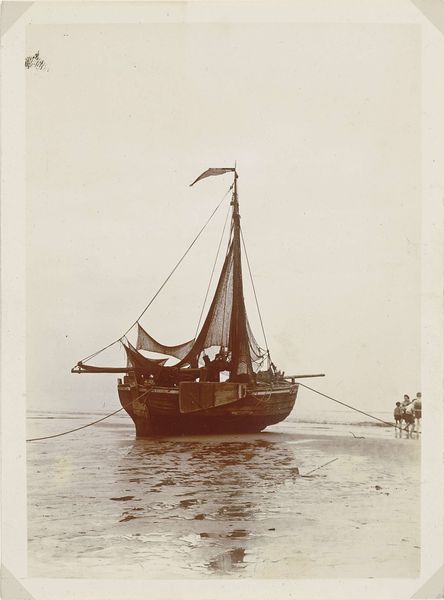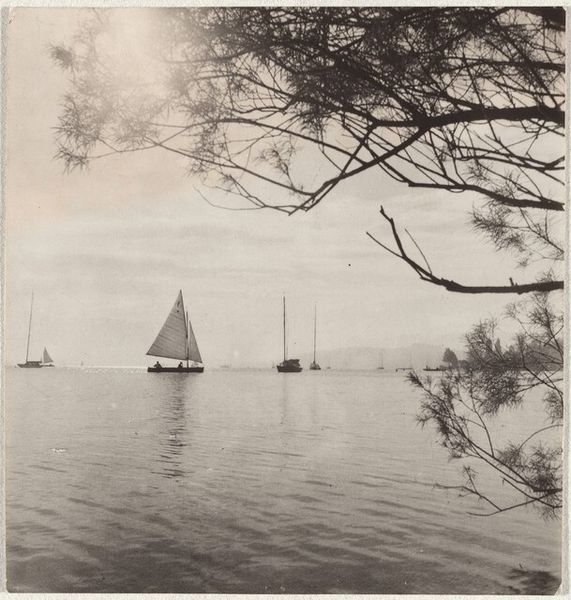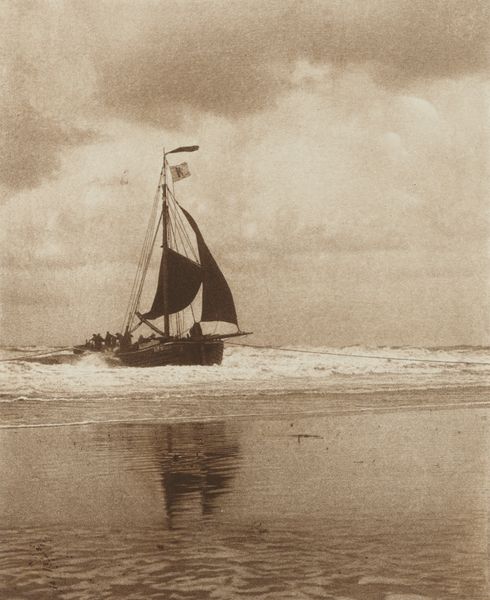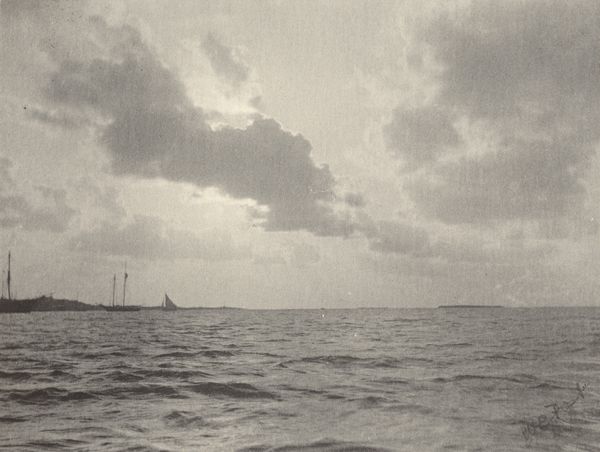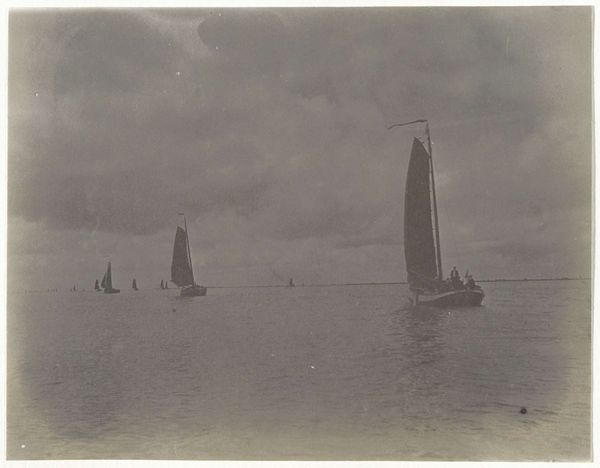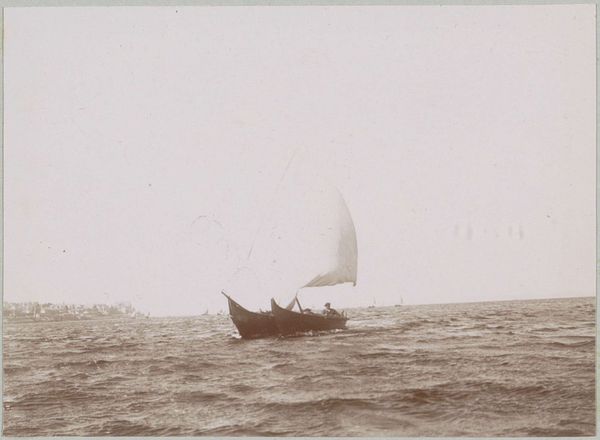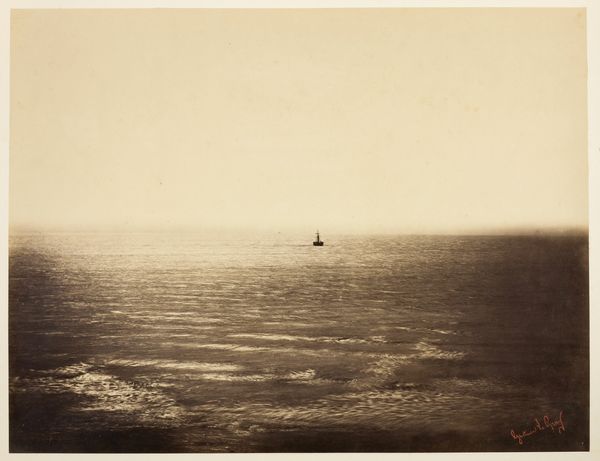
photography
#
print photography
#
16_19th-century
#
wedding photograph
#
photo restoration
#
wedding photography
#
war
#
outdoor photograph
#
outdoor photo
#
photography
#
couple photography
#
low atmospheric-weather contrast
#
england
#
monochrome photography
#
shadow overcast
Dimensions: 13.6 × 11.9 cm (image/paper); 42.3 × 33.5 cm (album page)
Copyright: Public Domain
Curator: The work before us, "A Suffolk Shrimper 'Coming Ashore'", a photograph by Peter Henry Emerson, dates from around 1883 to 1888. It's a gelatin silver print currently held in the Art Institute of Chicago. Editor: It’s…peaceful. Melancholy, almost. The muted tones and the solitary boat heading toward shore evoke a sense of quiet labor, of returning after a long day's work. It’s compelling in its simplicity. Curator: Emerson aimed for photographic naturalism, pushing against staged, pictorialist approaches popular at the time. He sought to capture scenes of rural life authentically. This piece resonates with broader narratives around labor, class, and the representation of marginalized communities in late 19th-century England. How does Emerson's realism affect your reading? Editor: Knowing his intentions adds another layer. It reframes what I see: no longer just a picturesque seascape but a social document. The shrimper’s labor is present, their class is visible – though the framing keeps us at a respectful distance. It asks the viewer to consider these lives not as an exotic scene, but within their daily context. I can't help but question the potential romanticization, the lens through which this image reaches an audience. Curator: Exactly. There is the complexity that surfaces when we consider how class, gender, and even colonialism are operating within the gaze. What political work does an image like this perform? We should investigate whether it perpetuates certain stereotypes of rural life or perhaps even challenges prevailing urban, bourgeois perspectives. Editor: Absolutely, and it's also relevant to investigate what the image does for and to us today. Thinking about our present historical moment—with concerns around the ecological impact of the fishing industry and sustainability, these images open to a critical lens on exploitation and class struggle. Curator: It highlights the continuous interplay of past and present. Our perspectives inevitably shape our interpretation of it. What lasting impression do you think "A Suffolk Shrimper" leaves us with? Editor: Perhaps it serves as a reminder that art doesn’t exist in a vacuum; that social contexts and contemporary theories shape our understanding. Emerson's image compels us to negotiate history, aesthetics, and our place within these narratives. Curator: Indeed, a potent reminder of how photography functions within complex social structures and how it offers a unique perspective.
Comments
No comments
Be the first to comment and join the conversation on the ultimate creative platform.
